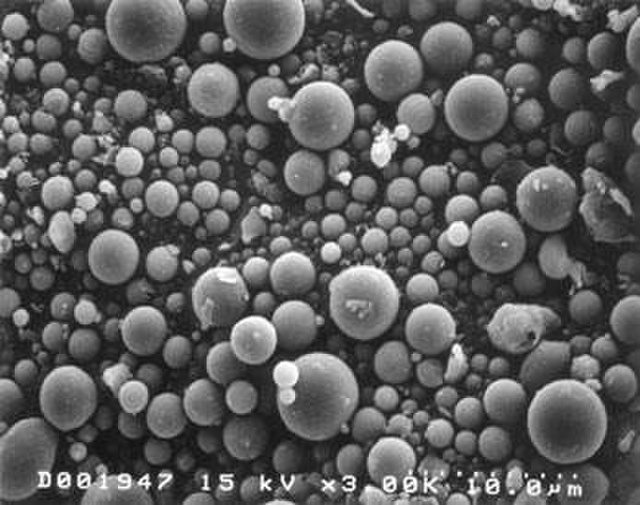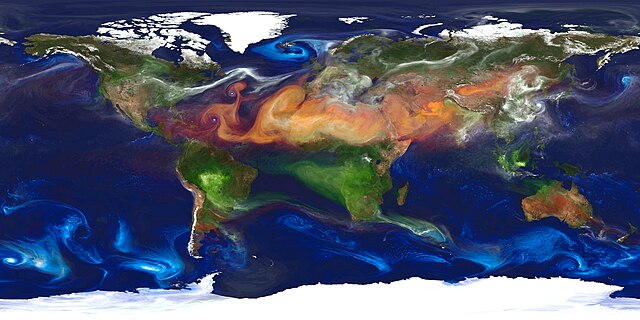Aerosol spray is a type of dispensing system which creates an aerosol mist of liquid particles. It comprises a can or bottle that contains a payload, and a propellant under pressure. When the container's valve is opened, the payload is forced out of a small opening and emerges as an aerosol or mist.
The aerosol spray canister invented by USDA researchers, Lyle Goodhue and William Sullivan.
Canned air / dusters do not contain air, and are dangerous, even deadly, to inhale.
An aerosol is a suspension of fine solid particles or liquid droplets in air or another gas. Aerosols can be generated from natural or human causes. The term aerosol commonly refers to the mixture of particulates in air, and not to the particulate matter alone. Examples of natural aerosols are fog, mist or dust. Examples of human caused aerosols include particulate air pollutants, mist from the discharge at hydroelectric dams, irrigation mist, perfume from atomizers, smoke, dust, sprayed pesticides, and medical treatments for respiratory illnesses.
Mist and fog are aerosols
Photomicrograph made with a Scanning Electron Microscope (SEM): Fly ash particles at 2,000× magnification. Most of the particles in this aerosol are nearly spherical.
Aerosol pollution over northern India and Bangladesh
Overview of large clouds of aerosols around Earth (green: smoke, blue: salt, yellow: dust, white: sulfuric)






